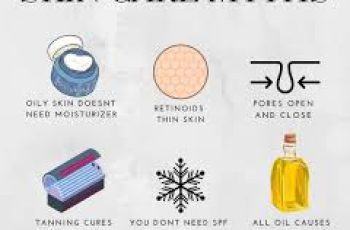
Can You Mix BHA with Vitamin C?
Exfoliation is one of the most effective ways to refresh your complexion and give your skin a healthy glow.
Whether you’re a fan of exfoliating or not, there’s no denying that it’s essential for removing dead skin cells, revealing smoother, clearer skin.
Thankfully, we now have many chemical exfoliants at our disposal, meaning we no longer have to rely on harsh physical scrubs or peels.
While chemical peels are not a new concept in skincare, their popularity has increased significantly in recent years.
Today, many of us rely on exfoliating toners, masks, and serums to help keep our skin looking fresh and youthful.
Among the most popular exfoliants are acids, specifically Beta Hydroxy Acids (BHAs) and Alpha Hydroxy Acids (AHAs).
With the growing number of active ingredients available, it’s important to know how to combine them effectively.
One common question is whether you can combine Vitamin C with BHAs, as both are known for their potent skincare benefits.
But can they be used together safely? Let’s break it down and explore how these ingredients work, their benefits, and how they can be combined in a skincare routine.
What Are the Benefits of BHAs?
Beta Hydroxy Acids, or BHAs, are a group of chemical exfoliants that differ from their cousins, Alpha Hydroxy Acids (AHAs), in several key ways.
One of the most important differences is that BHAs are oil-soluble, which allows them to penetrate deeper into the skin and target issues that lie beneath the surface.
The most well-known and widely used BHA is salicylic acid, which has a unique ability to unclog pores.
Since it can penetrate deeply into the skin, salicylic acid works wonders for those with acne-prone or oily skin.
It helps to break down the bonds that hold dead skin cells together, preventing clogged pores and resulting in fewer breakouts.
But the benefits of BHAs go beyond just clearing pores. These acids can also regulate sebum production, which is particularly beneficial for those who struggle with oily skin.
They can remove excess oil, dirt, and bacteria that build up in the pores, ultimately leading to fewer blemishes such as whiteheads, blackheads, and other forms of acne.
In addition, BHAs are known for their anti-inflammatory properties, which help to reduce redness, irritation, and inflammation caused by acne.
Salicylic acid is also particularly effective at improving the appearance of your skin’s texture.
By removing dead skin cells, it helps create a smoother surface, making the skin look brighter and more even-toned.
Many people notice a visible improvement in their complexion when using BHA-based products regularly.
What Are the Benefits of Vitamin C?
Vitamin C, also known as ascorbic acid or L-ascorbic acid, is one of the most celebrated ingredients in skincare. It is a powerful antioxidant that offers a wide range of benefits for the skin.
Vitamin C’s main role is to fight free radicals—unstable molecules that can damage skin cells and accelerate the aging process.
Free radicals are produced by environmental factors like pollution, UV radiation, and even stress.
One of Vitamin C’s standout benefits is its ability to brighten the complexion. It inhibits the enzyme responsible for melanin production, which helps reduce hyperpigmentation and dark spots.
By minimizing melanin production, Vitamin C can gradually lighten skin discoloration caused by acne scars, sun exposure, and other environmental factors.
In addition to brightening, Vitamin C has anti-inflammatory properties that help calm irritated skin and reduce redness.
This makes it an excellent choice for people with sensitive or inflamed skin, as it can soothe inflammation while promoting healing.
Moreover, Vitamin C is well-known for its ability to stimulate collagen production in the skin.
Collagen is essential for maintaining skin’s elasticity and firmness, which helps reduce the appearance of fine lines and wrinkles.
By increasing collagen synthesis, Vitamin C can help you achieve a more youthful, plump appearance over time.
Can BHA and Vitamin C Be Used Together?
So, can BHA and Vitamin C be used together? The short answer is yes, but with some important considerations. Both BHA and Vitamin C are highly active ingredients that work effectively on their own.
However, when combined, they can potentially cause skin irritation if not used correctly.
Here are a few ways to incorporate BHA and Vitamin C into your routine without causing irritation:
Option 1: Use Them at Different Times of the Day
One of the simplest ways to use Vitamin C and BHA together is by applying them at different times of the day.
Since both ingredients have an acidic pH, layering them together in the same routine may disrupt the skin’s natural pH balance, leading to irritation or dryness.
To avoid this, many people find that using Vitamin C in the morning and BHA at night works best.
Vitamin C is a great choice for the morning because it provides antioxidant protection against free radicals and environmental stressors like pollution and UV rays.
On the other hand, BHA works well at night, allowing it to deeply penetrate the skin without being affected by external environmental factors.
Option 2: Use Them on Different Nights
If using both ingredients in the same day causes irritation, you can alternate between Vitamin C and BHA on different nights.
This ensures that each ingredient can perform its role without interference.
Vitamin C still provides its benefits at night, as its antioxidant properties help repair skin damage from the day, so you don’t have to worry about missing out on its effects by using it in the evening.
For some, alternating between Vitamin C and BHA may reduce the risk of sensitivity, while still allowing the skin to reap the benefits of both ingredients.
Option 3: Layer Vitamin C on Top of BHA
For those with skin that can tolerate both ingredients, there is an option to use them together in the same routine, but with a specific layering technique.
The general rule of thumb is to apply BHA first, followed by Vitamin C.
If you choose this option, be sure to wait at least 20 minutes after applying the BHA before layering Vitamin C on top.
This gives the skin time to absorb and soothe the first product before introducing the next.
Vitamin C will work more effectively when the skin is free of excess oils and dead skin cells, which is why applying BHA first is crucial.
Which Comes First: Vitamin C or BHA?
When using Vitamin C and BHA together in a single routine, the order of application matters. Generally speaking, BHA should be applied first.
The reason for this is that BHA is an oil-soluble acid that penetrates the skin more deeply.
It helps to clear away dead skin cells and unclog pores, preparing your skin for the next product in your routine.
Once BHA has had time to absorb and exfoliate the surface of your skin, you can apply Vitamin C.
Since Vitamin C is water-soluble, it will be able to penetrate more effectively once the dead skin cells and oils have been removed.
However, it’s important to remember that everyone’s skin is different.
What works for one person may not work for another, so it’s a good idea to perform a patch test or consult with a dermatologist before introducing these active ingredients into your skincare routine.
Things to Consider Before Using BHA and Vitamin C Together
While BHA and Vitamin C can be a powerful combination for many people, there are a few things to keep in mind before mixing them.
First, if you have sensitive skin or are prone to irritation, you may want to ease into using these ingredients together.
Start by using each product separately and gradually increase usage to assess how your skin reacts.
Second, always make sure to wear sunscreen during the day, especially when using active ingredients like Vitamin C and BHA.
Both acids can make your skin more sensitive to the sun, so applying SPF daily is crucial to prevent sun damage.
Finally, consult with a dermatologist or skincare professional if you have any concerns or doubts about incorporating these ingredients into your routine.
They can help you tailor a routine that’s best suited for your skin type and concerns.
Conclusion
Both BHA and Vitamin C are incredibly effective skincare ingredients that offer a range of benefits, from exfoliation and acne prevention to brightening and anti-aging.
While these ingredients work well on their own, combining them in your routine requires a bit of care to avoid skin irritation.
By applying BHA and Vitamin C at different times of the day or alternating between them on different nights, you can enjoy the benefits of both without compromising your skin’s health.
If you’re unsure about how to use these products, always perform a patch test and seek advice from a skincare professional.
With the right approach, combining BHA and Vitamin C can give you a smoother, brighter, and clearer complexion, helping you achieve your skincare goals.
If you have any further questions or need more personalized advice, feel free to reach out to skincare experts online or in-store. Happy skincare journey!


